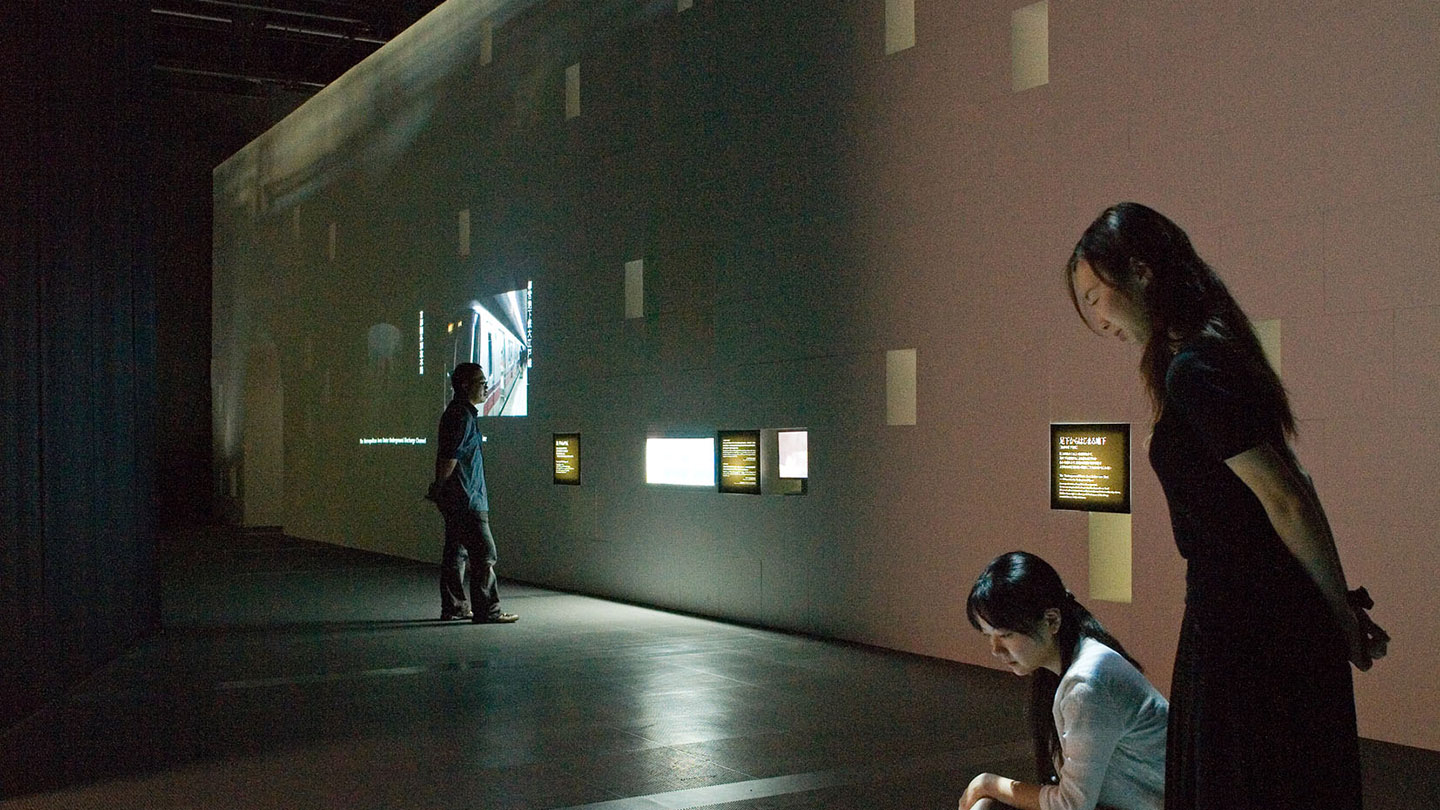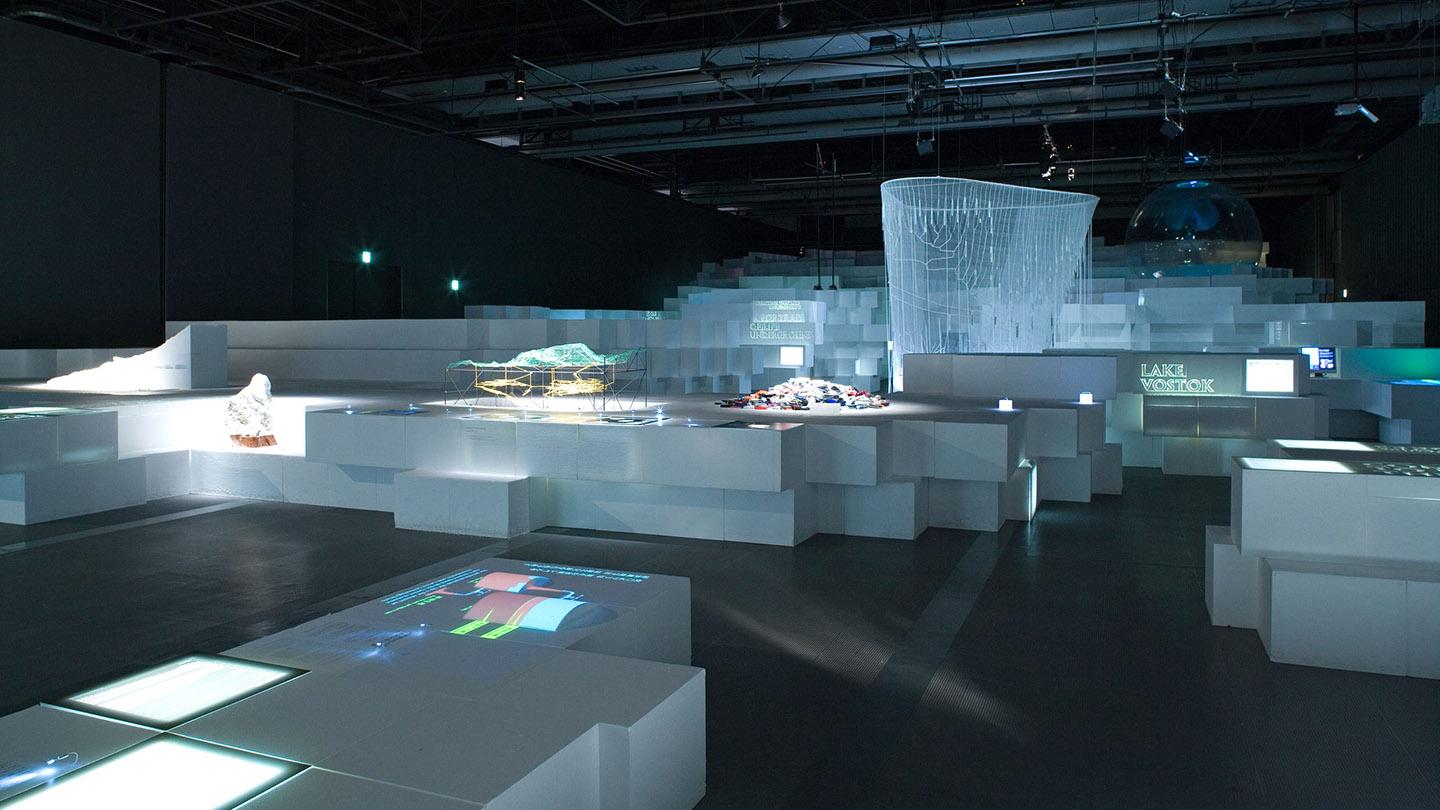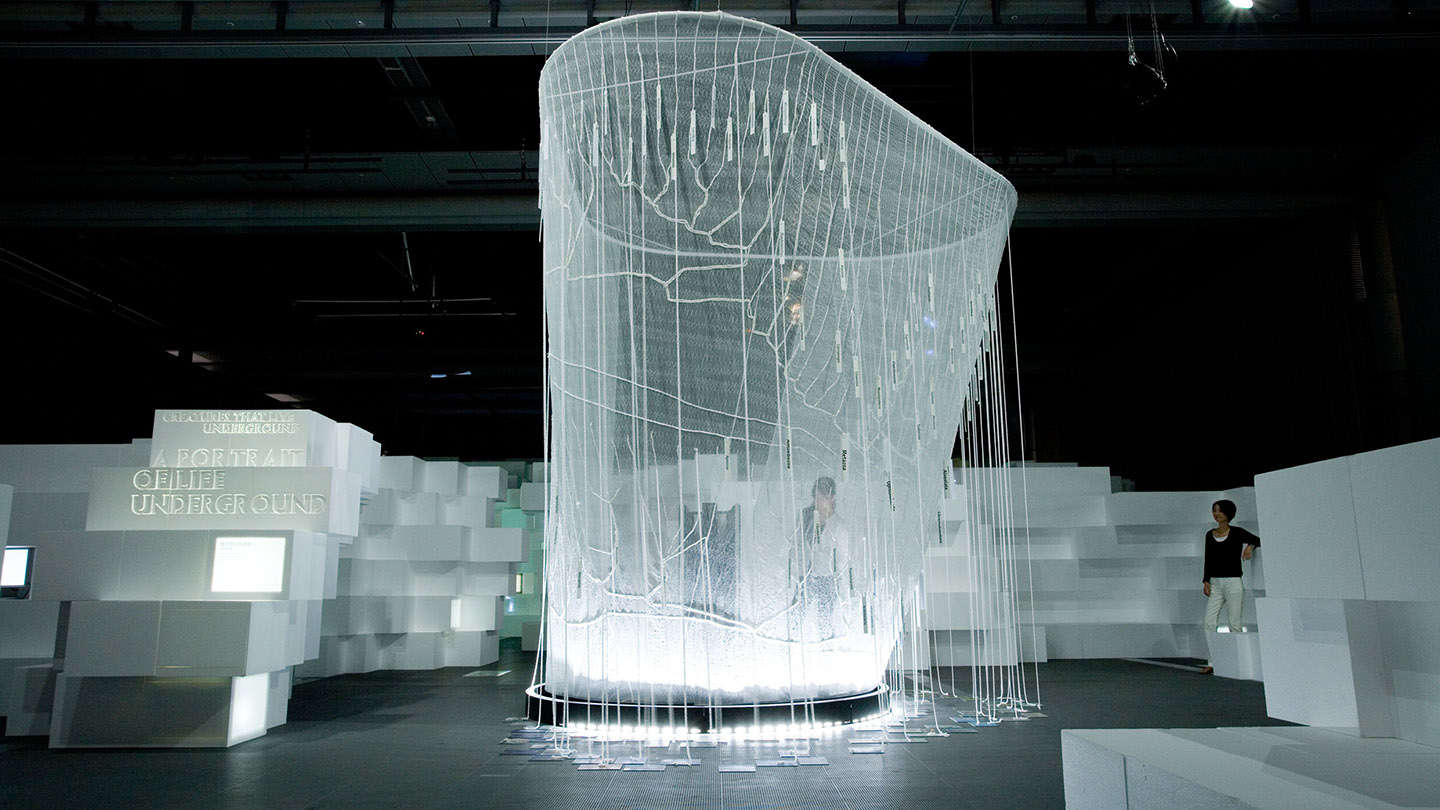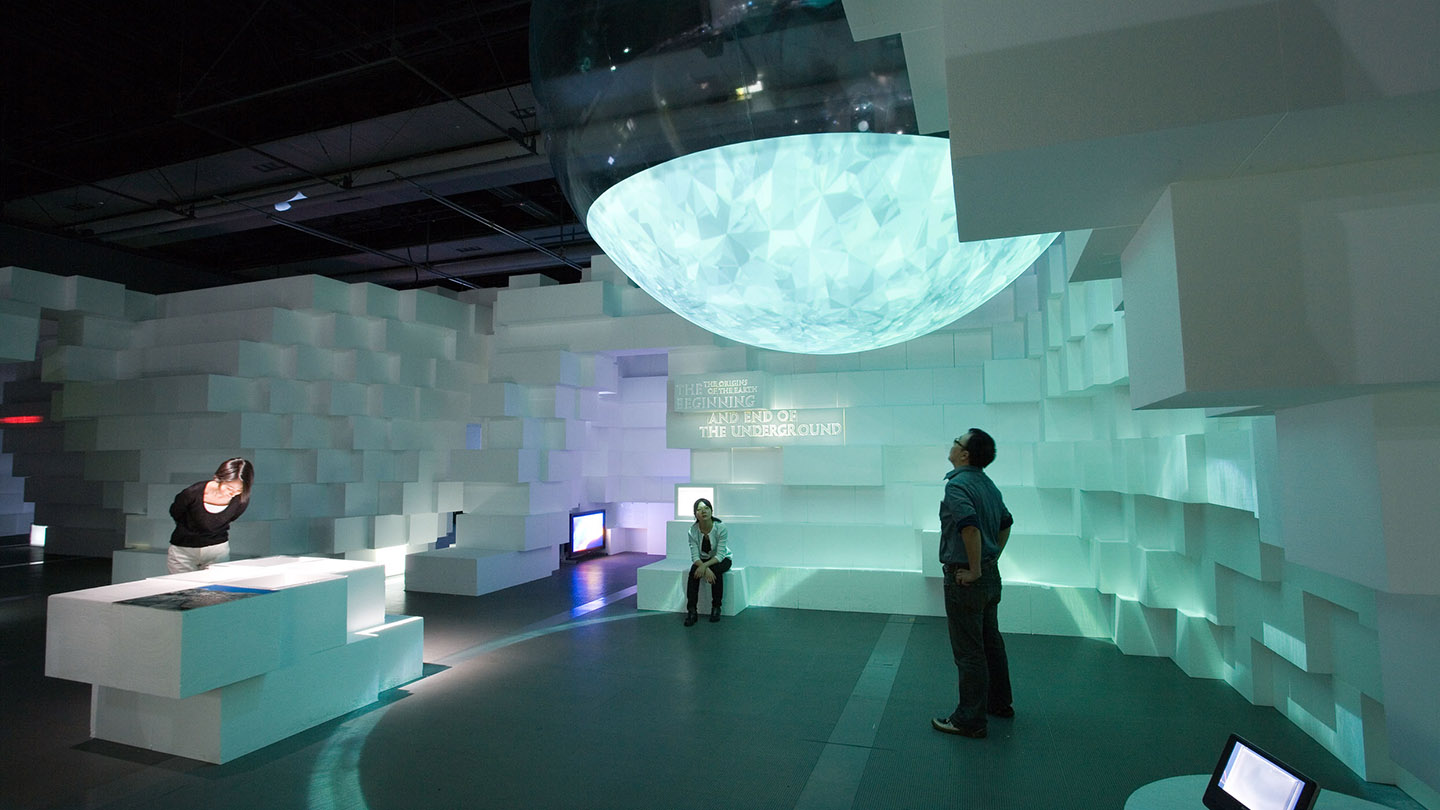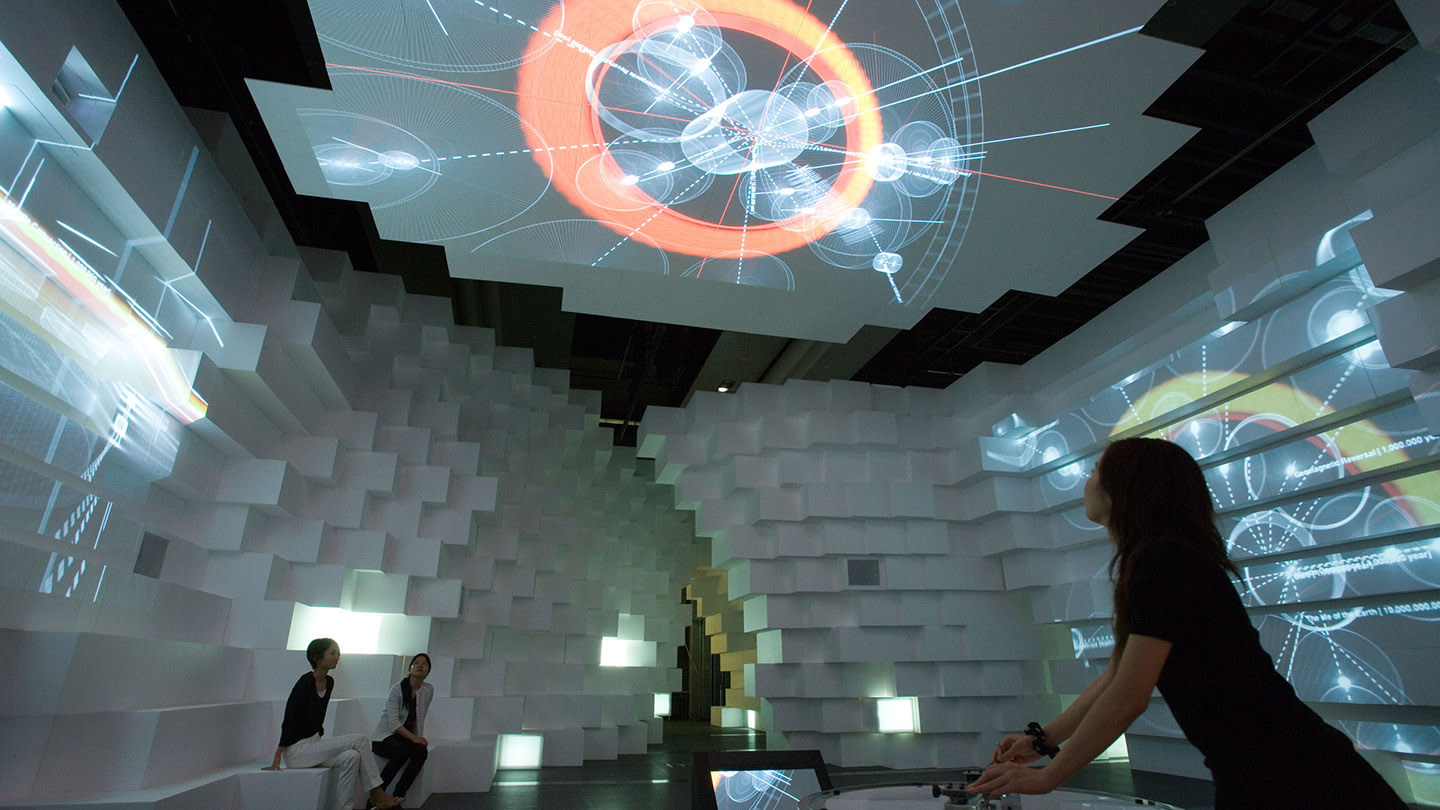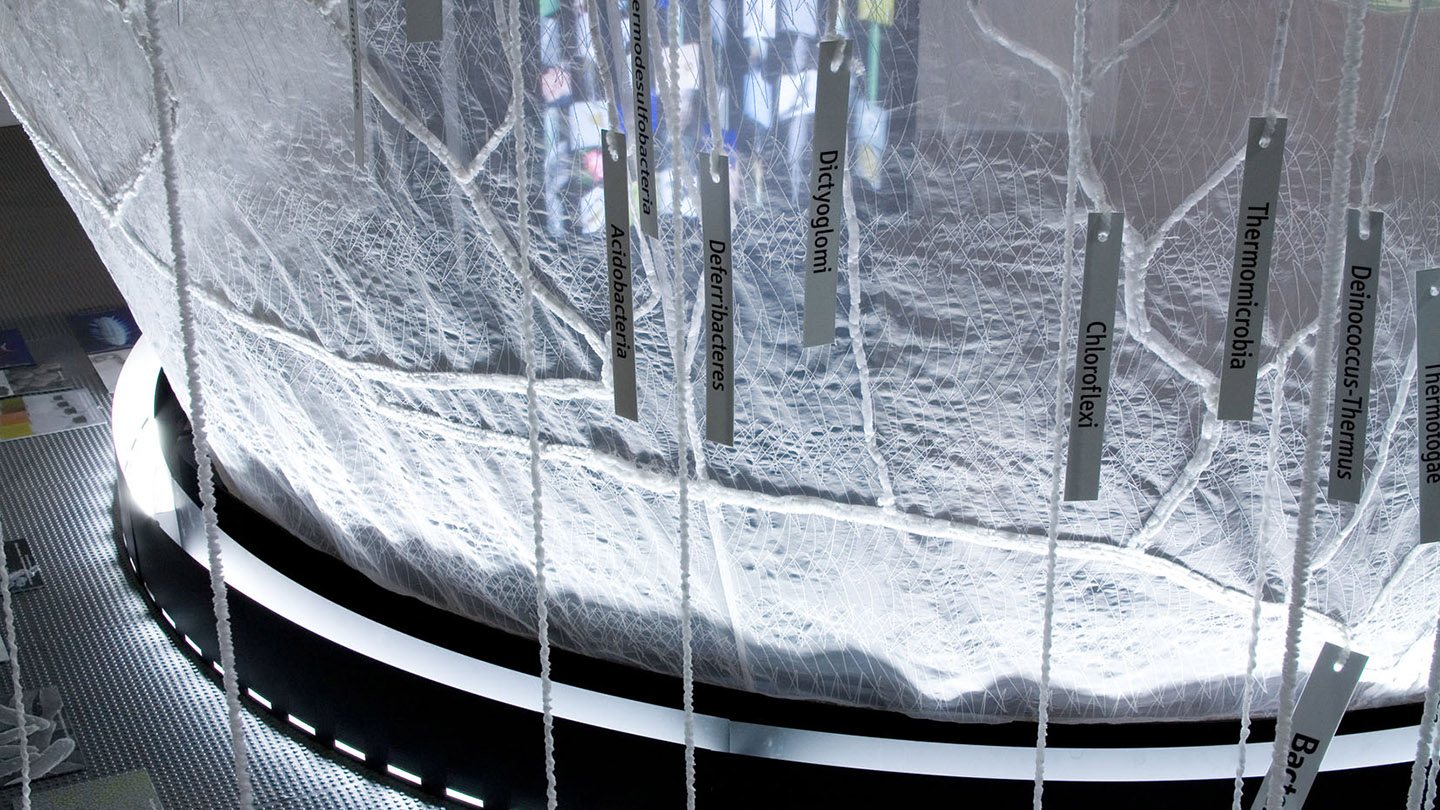This exhibition has ended.
Exhibition Outline
This Special Exhibition focuses on the earth's final frontier, the "Underground, " which is an unknown area that is to be explored by the application of advanced scientific techniques. Through combining perspectives from the natural sciences, humanities and social sciences, we will present the underground world which has been uncovered by scientific exploration and share the world's perception of the underground world that has been depicted in arts, philosophy, sociology and other media.
Visitors can familiarize themselves with the latest research results on the inner workings of our world such as the earth's origin and environment, underground life forms, and earthquakes and also see how these developments greatly influence our very existence.
Contents
“The Adventure Begins”/ “The Underground Starts Just Below our Feet” [Urban Uses for Underground Space]/ “Preparing to Go Underground”
This exhibit introduces videos of underground facilities that are necessary for urban life, such as tunnels and subway railroads, and the creatures that live under the ground. Imagine the invisible, underground world.
Time Capsule [Time Capsule EXPO ’70 Project] / Noah’s Ark: [The Svalbard Global Seed Vault]
This exhibit introduces you to a time capsule project carried out for Expo ’70 in Osaka, in which time capsules were buried for opening 5,000 years in the future. It also displays Norway’s project of preserving several million varieties of agricultural seeds in preparation for devastating disasters. Learn how the underground is the place where the past and future are connected.
“Treasures beneath the Earth [Underground Resources]”/ “Committing to the Earth [Disposal of Radioactive Waste]”
This exhibit explores underground resource mysteries such as the cutting-edge technology of oil exploration and the reality of the oil shocks. It also introduces plans to bury high-level nuclear waste created by the recycling of nuclear fuel at a safe depth of over 300 meters underground. In addition, the exhibition rethinks the relationship between underground resources, formed over tens of thousands of years, and human activities above the ground.
“Excavating the Memory of Ice [Cores from the Ice Sheet]/ “The Lake No One Has Ever Seen [Lake Vostok, at the South Pole]”
This exhibit explains the history of the global environment from research on excavating ice sheets in the South Pole. It also introduces Lake Vostok, one of the world’s largest underground lakes, located at the South Pole.
“The Tree of Life [Universal Phylogenetic Tree, the Family Tree of All Living Things on the Earth] / “Branching out from the Common Ancestor [Commonote]”
Thanks to the development of the study of molecular evolution, research is being conducted based on the premise that all living things came from a common ancestor (commonote). The fruits of this research are displayed in this interactive exhibit as the “Tree of Life.”
“A Portrait of Life Underground [Creatures that Live Underground]
It is said that there are more creatures under the ground than above it, and their unique ecology has attracted attention as clues to solving the mystery of the origins of life, as well as for its application in industry. This exhibit deals with the mystery of the underground creatures who live in this extreme environment without oxygen or sunlight.
“Where Life Begins [The ‘Underground’ Theory of the Origins of Life]”
This exhibit introduces the “Theory of the Origin of Life Underground,” which holds that clay minerals in the ground became intricately linked with materials on the primeval Earth and created the structures that became the basis of life.
“History in the Darkness [Giant Meteorite Collision]”
It is said that 76% of all species were wiped out en masse, 65 million years ago when a giant meteorite struck the Earth. This exhibit brings you closer to this major event in Earth history by linking accomplishments from Earth science, such as a simulation of the meteorite collision, to results from biology as verified by fossils.
“The Day the Earth Froze [Snowball Earth]”
It is said that the “Snowball Earth,” when the Earth was covered entirely by ice, has occurred three times in its 4.6 billion-year history. This exhibit solves the mystery by introducing this phenomenon based on evidence discovered underground, and making use of a gigantic globe display.
“From Underground to Our Planet’s Core [The Earth’s Internal Structure]”
This exhibit introduces the dynamics inside the Earth through the latest simulation imagery. You can actually feel the weight of the core, the speed of the mantle’s movement, and more.
“The Beginning and End of the Underground: The Origins of the Earth”
The structure of the underground suggests the origins of the Earth. This exhibit introduces the origins, evolution, and future of the Earth by linking them with discoveries in astronomy.
“4.6 Billion-Year Clock” Earth System
All of the elements within the Earth are closely connected, like the cog wheels of a clock; they are also deeply connected with our life on Earth, such as the formation of resources and the climatic cycle. The many different timescales carved out by this underground clock are expressed as a “4.6 billion-year clock,” which lets you feel the pulse of the Earth.
Venue Scenery
Overview
- Title
- UNDERGROUND - Adventure in the Darkness Created by Imagination and Science
- Term
- September 22 (Sat.), 2007 - January 28 (Mon.), 2008
- Venue
- 1F Exhibition Space a and b, Miraikan
- Admission fee
-
Adults: 900 yen / 18 and under: 350 yen (Permanent Exhibition can also be viewed)
Group (8 or more people): Adults: 800 yen / 18 and under: 310 yen
* Free admission for those in possession of a Disability Book and one accompanying person
- Organizer
- National Museum of Emerging Science and Innovation

